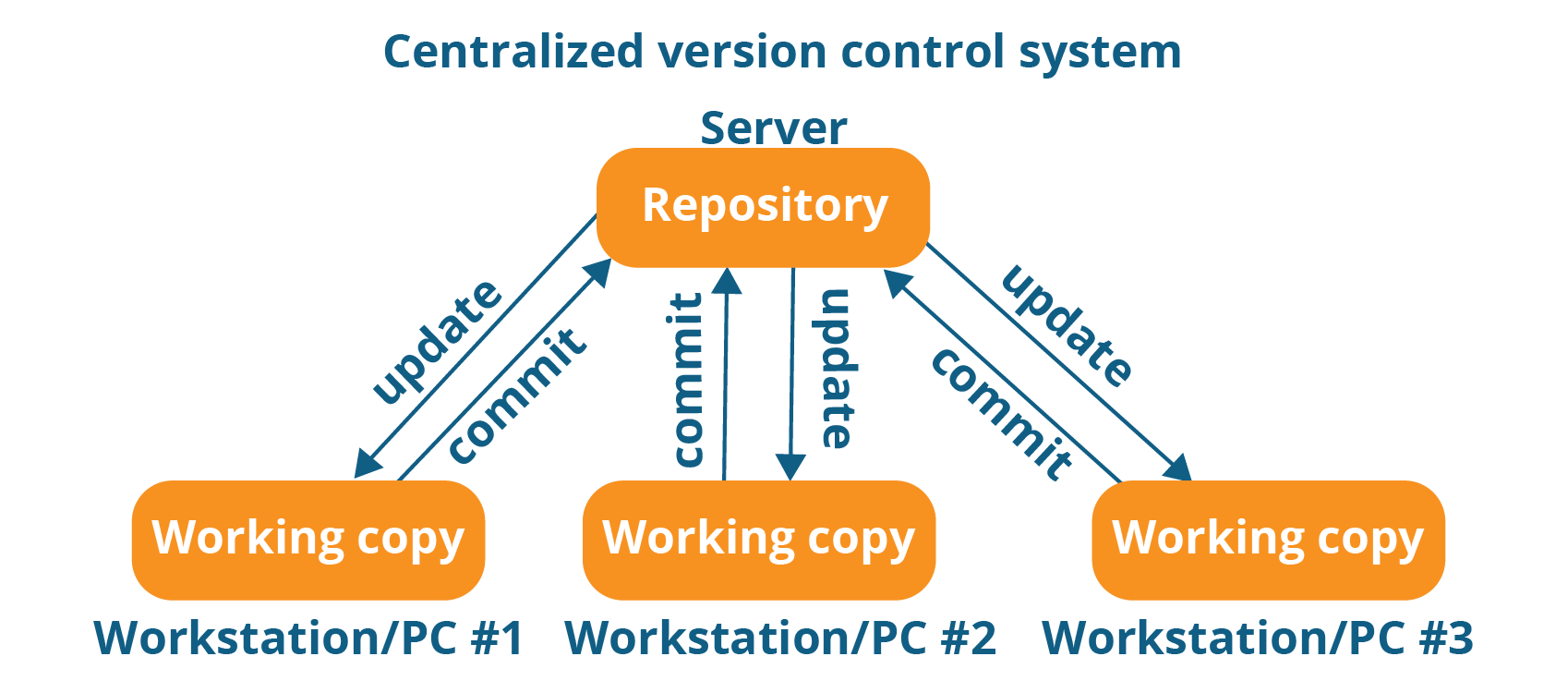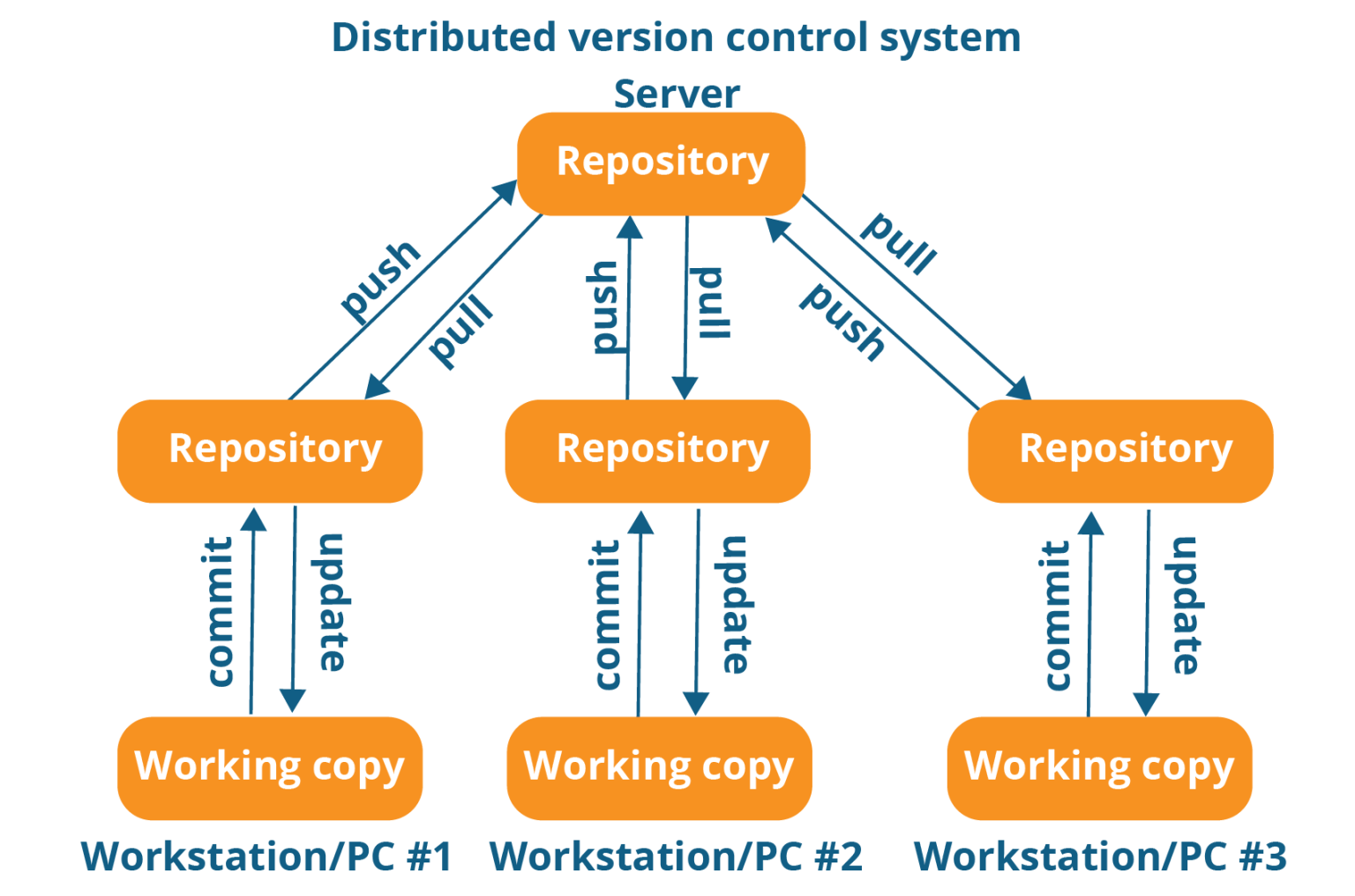GitHub
"Collaboration and Control: GitHub - Empowering Teams, Simplifying Version Control"
A version control system (VCS) is a software tool that helps manage and track changes to files and directories over time. It allows multiple people to collaborate on a project by providing a mechanism to merge and synchronize their work. Version control systems are commonly used in software development to track changes to source code, but they can also be used for managing changes to any type of text-based file, such as documents, configuration files, and scripts.
There are two main types of version control systems: centralized and distributed.
- Centralized Version Control System (CVCS): In a CVCS, there is a central repository that stores all the files and their versions. Developers can check out a copy of the files from the central repository, make changes, and then commit those changes back to the repository. Examples of centralized version control systems include CVS (Concurrent Versions System) and Subversion (SVN).

- Distributed Version Control System (DVCS): In a DVCS, each developer has a local copy of the entire repository, including the complete history of all files. This allows developers to work independently and commit changes to their local repository. They can also merge their changes with other developers' repositories to synchronize and share work. Examples of distributed version control systems include Git, Mercurial, and Bazaar.

GitHub is a website where developers can store and manage their code. It helps them work together on projects by keeping track of changes and allowing multiple people to work on the same code at the same time. It also provides tools for issue tracking and project management. It's a popular platform for sharing and collaborating on code with other developers.
Version control systems provide several benefits, including:
Collaboration: Multiple people can work on the same files simultaneously and merge their changes together.
History and Auditing: Version control systems keep track of every change made to files, allowing you to view the history, compare versions, and understand who made what changes.
Branching and Merging: Version control systems enable developers to create branches to work on separate features or experiments, and later merge those branches back together.
Rollback and Recovery: If a mistake is made or a file is corrupted, it's possible to revert to a previous version and recover lost work.
Team Coordination: Version control systems provide mechanisms for resolving conflicts when multiple developers modify the same file simultaneously.
Whether you are working on a personal project or collaborating with a team, using a version control system can greatly simplify and streamline the process of managing changes to your files and ensure the integrity and traceability of your work.
Difference between git and github
Github architecture:
Git: The core technology that manages version control and tracks changes to code.
Repository Storage: Where the code repositories and files are securely stored.
Web Application: The user interface on the website that allows developers to browse and interact with repositories, manage issues, and collaborate with others.
API: A way for developers to access GitHub's features and services programmatically.
Authentication and Authorization: Systems in place to ensure secure access to repositories and resources.
Event-driven Architecture: Triggers and notifications that occur when certain actions, like code pushes or issue updates, happen on the platform.
Collaboration and Social Features: Tools and features that encourage teamwork, such as discussions, comments, and code reviews.
Continuous Integration and Deployment: Integrations with tools that automate building, testing, and deploying code from GitHub.
THANK YOU FOR READING!